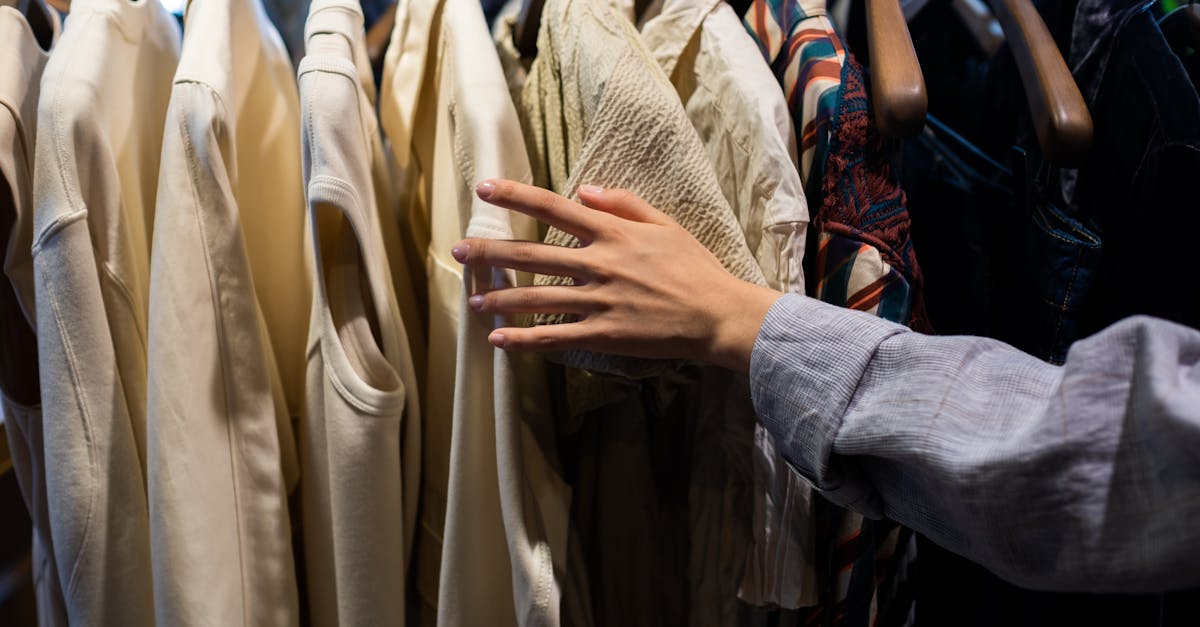The Rise Of Slow Shopping Why Taking Your Time Saves More Than Money
Introduction
In an age where speed often equals success, the concept of slow shopping is gaining traction. The rise of slow shopping isn't just about taking leisurely strolls through aisles; it's a movement towards mindfulness in consumerism. This emerging trend emphasizes quality over quantity, encouraging shoppers to savor their experience. Instead of rushing through stores, consumers are urged to connect deeply with their purchases. With a growing focus on sustainability, many are finding that slow shopping can lead to more thoughtful and enduring choices. Essentially, this philosophy suggests that taking your time can save more than just money—it can enhance life satisfaction.
Advertisement
Understanding Slow Shopping
Slow shopping is about challenging the high-speed retail culture and prioritizing thoughtful decision-making. Shoppers who practice this approach take time to research products, assess their true needs, and weigh options carefully. By immersing themselves in the shopping process, they often discover unique products that align more closely with their personal values. This mindful approach can lead to increased satisfaction and a deeper connection with purchased items. As consumers become more aware of environmental issues, slow shopping supports the demand for sustainable, ethical products. Consequently, this shopping philosophy promotes a holistic lifestyle that emphasizes responsibility.

Ron Lach/Pexels
Advertisement
The Emotional Benefits of Slow Shopping
Engaging in slow shopping fosters positive emotions like relaxation and fulfillment, contrary to the rush of hurried purchasing. As shoppers dedicate ample time to peruse and experience products, stress diminishes, allowing them to enjoy the process fully. It offers a chance to appreciate and evaluate a product's worth, aligning purchasing decisions with personal desires and values. By eliminating impulse buys, individuals can cherish their acquisitions, remembering the experience with fondness. Additionally, spending time in thoughtful contemplation builds anticipation, enhancing overall satisfaction.
Advertisement
Economic Insights: More Savings
Although leisurely shopping might seem time-consuming, it can result in significant financial savings. By avoiding impulse buys commonly associated with rushed shopping, consumers can focus on purchasing quality over quantity. Over time, investing in fewer, well-crafted products often proves more cost-effective, as they tend to last longer, reducing the frequency of replacements. Furthermore, slow shopping facilitates budget-conscious choices, allowing consumers to compare prices across brands and consider reviews meticulously. These practices ensure that money is spent wisely, yielding improved long-term economic outcomes.
Advertisement
Enhancing Sustainability Through Slow Shopping
The increasing demand for sustainable and ethically-produced goods intertwines seamlessly with the slow shopping approach. Carefully selecting eco-friendly products can reduce one's environmental footprint significantly. Conscious shoppers often prefer local and artisan vendors, supporting small businesses while ensuring minimal transportation impacts. Additionally, by understanding the lifecycle of their purchases, consumers can reduce waste and contribute to a more sustainable future. This alignment between slow shopping and sustainability highlights the growing desire among consumers to support ethical consumption.
Advertisement
Slow Shopping and Mental Health
Incorporating slow shopping into one's routine can have profound impacts on mental health. The practice encourages individuals to focus on the present moment, fostering mindfulness and reducing anxiety. This leisurely approach transforms shopping into a therapeutic activity, providing a serene escape from everyday stressors. Engaging senses by touching, smelling, and experiencing products holistically can improve mood and empathy. Moreover, supporting local businesses and engaging in community interactions enhances feelings of belonging and well-being, paving the way for more fulfilling experiences.
Advertisement
Crafting the Perfect Shopping Experience
Retailers can capitalize on slow shopping by creating immersive and inviting environments. From in-store displays to personalized customer service, a focus on the customer experience can elevate the purchasing process. Engaging sensory elements like soft lighting, calming music, and tactile interactions foster a welcoming ambiance. Retailers that offer workshops or product demonstrations can further engage consumers, leading to more informed and deliberate buying choices. Catering to slow shoppers by creating comfortable, discovery-oriented spaces can transform mundane errands into enchanting adventures.
Advertisement
Challenges of Adopting Slow Shopping
While beneficial, the transition to slow shopping does face challenges. Modern life, characterized by endless to-do lists and convenience-driven habits, may impede the adoption of a slow shopping mentality. Additionally, slow shopping requires patience and discipline—traits not easily cultivated in a fast-paced world. Retailers must balance between offering swift services and creating environments conducive to leisurely shopping. Furthermore, consumers may initially find it difficult to adjust and might fear missing out on deals. Emphasizing education and cultivating a culture that values quality over speed can help shift perceptions.
Advertisement
Implementing Slow Shopping in Everyday Life
To adopt slow shopping, practitioners can start by planning dedicated shopping trips, focusing on savoring each stage. They may create lists that prioritize needs, ensuring purposeful choices. Engaging with local markets or artisan shops encourages discovery, encountering unique products that align with individual values. Incorporating leisurely shopping with family or friends can enhance experiences, turning shopping into a shared activity. As consumers choose slow shopping, they may notice a profound shift towards more intentional and rewarding consumption patterns.
Advertisement
Conclusion
Slow shopping heralds a new wave of consumerism, emphasizing quality, sustainability, and mindfulness amid a fast-paced world. By encouraging consumers to savor their shopping experiences, it offers a richer, more fulfilling approach. This method fosters stronger connections with purchases while promoting responsible consumption. It saves not just money, but also builds a deeper appreciation for life's small pleasures. As individuals increasingly embrace slow shopping, they contribute to a more sustainable and serene society.
Advertisement






